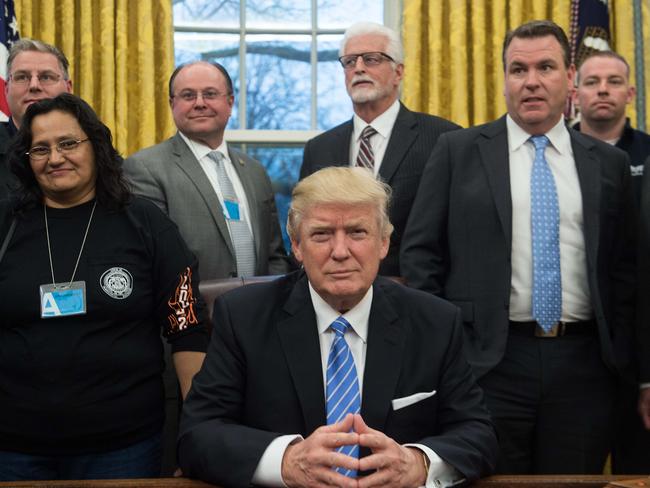How will Donald Trump’s dumping of Trans-Pacific Partnership affect Australia?
DON’T panic, it’s not a disaster. Economists say US President Donald Trump’s executive order today ending the United States’ participation in the Trans-Pacific Partnership trade pact was not necessarily a huge loss for Australia.
Business
Don't miss out on the headlines from Business. Followed categories will be added to My News.
DON’T panic, it’s not a disaster for Australia.
Economists say US President Donald Trump’s executive order today ending the United States’ participation in the Trans-Pacific Partnership trade pact was not necessarily a huge loss for Australia.
Economist Dr Shane Oliver, head of investment strategy at AMP, said the impact of the mega trade deal between 12 Pacific Rim countries would only have been marginal if passed.
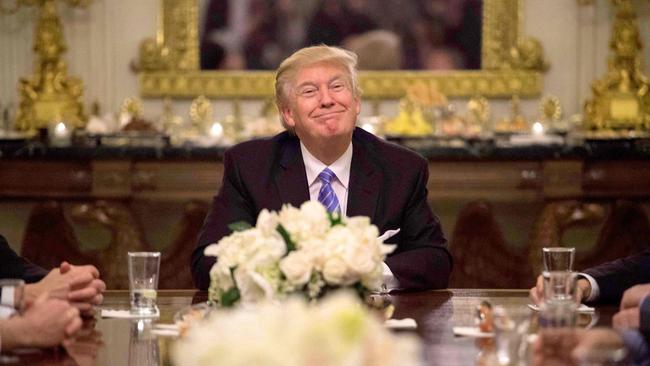
A World Bank report last year found the trade pact would have boosted our economy by just 0.7pc by the year 2030.
“I doubt it would have had a huge boost on the Australian economy anyway,” Dr Oliver said. “The easy gains from free trade with cheaper Mazdas are long in the past. The benefit of this would have been marginal.
“I don’t think it’s a disaster for Australia, it would have been nice in theory but I don’t think it’s a huge loss.”
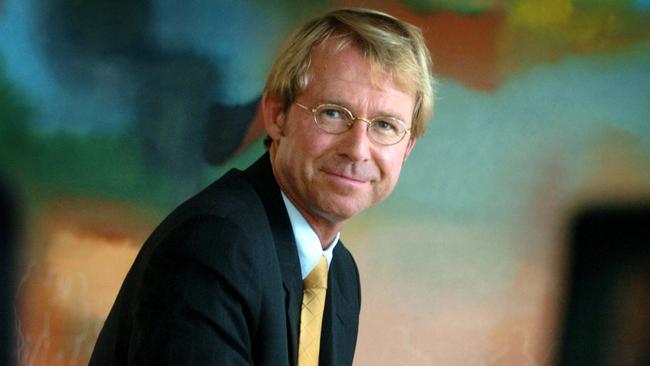
No surprise Trump withdrawing US from TPP (it was dead in the water anyway).Min impact on Aust..other regional trade deals will fill the gap
— Shane Oliver (@ShaneOliverAMP) January 23, 2017
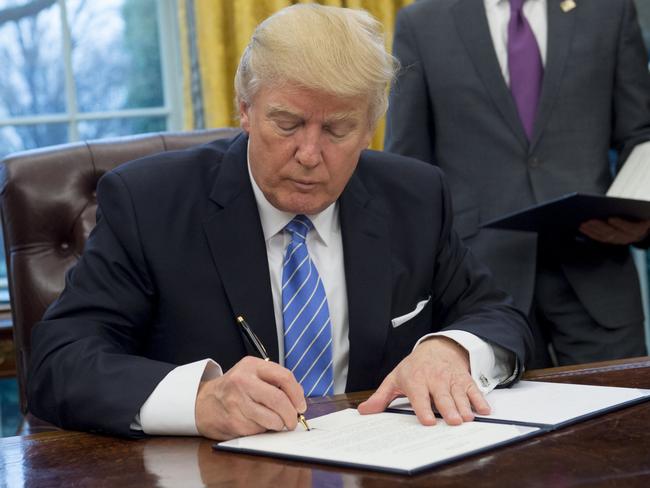
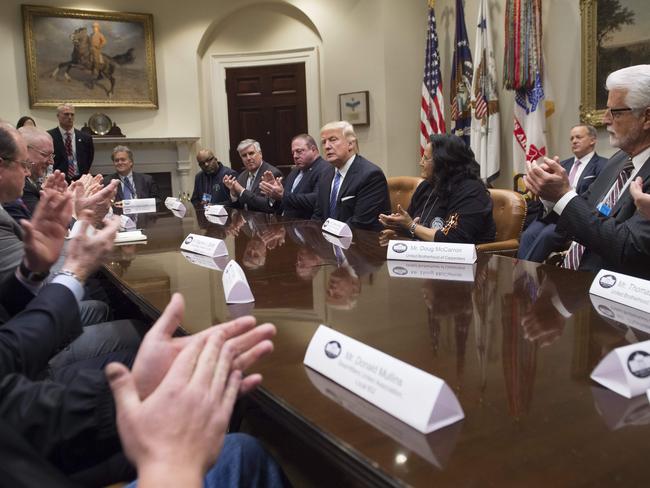
He said the real negative may be if the US, under Donald Trump, began retreating from the global trading system, negatively affecting China and sparking trade wars.
“The TPP has been dead in the water for a long time anyway. Obama couldn’t get it through Congress and it’s questionable whether Trump would have got it through Congress.”
Commsec’s Craig James said if the cancellation had come out of the blue, it would have been more impact on the markets, but it had been well flagged.
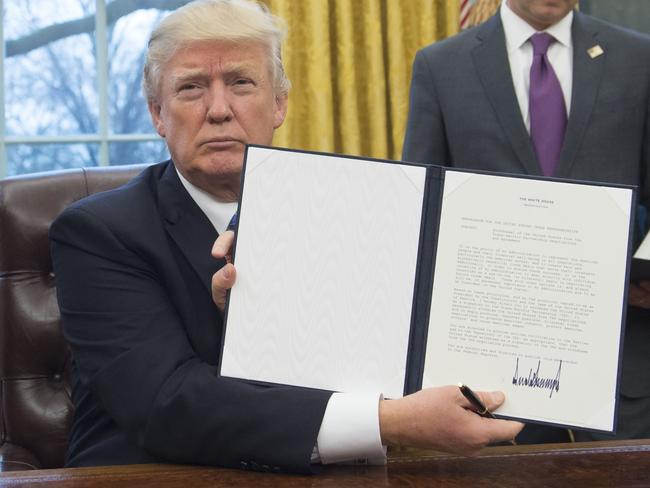
Busy week planned with a heavy focus on jobs and national security. Top executives coming in at 9:00 A.M. to talk manufacturing in America.
— Donald J. Trump (@realDonaldTrump) January 23, 2017
“US markets took it in their stride and it hasn’t impacted on the Aussie dollar,” he said.
“We may have a wider TPP without the US, but with China, which is our biggest trading partner.”
“Between 25 to 35pc of our exports and imports are with China.”
Trade Minister Steve Ciobo said there was now scope for China to join the agreement.
He said the Turnbull government would keep alive the option of ratifying the TPP by putting it to a vote in the Australian parliament.
The Productivity Commission has also been strongly critical of the provisions of the TPP, arguing its provisions change free trade agreements into “preferential agreements”.
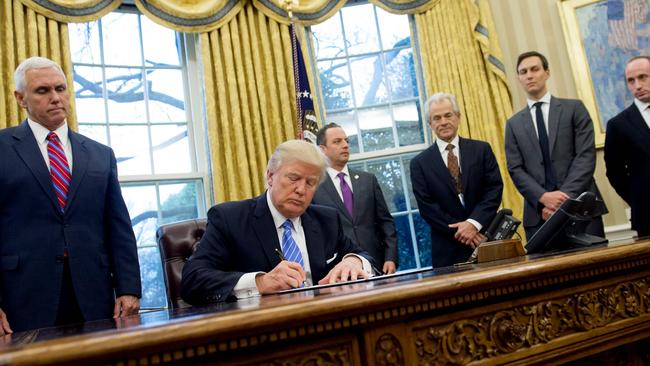
WHAT IS THE TPP?
* The Trans-Pacific Partnership was the world’s largest regional trade agreement, involving 12 nations and covering about 40 per cent of the global economy.
* Australia joined the negotiations in late 2008 and Trade Minister Andrew Robb was lead negotiator.
* The TPP was hoped to eliminate more than 98 per cent of tariffs in the region, removing import taxes on about $9 billion of Australian trade.
* Beyond market access, the TPP was to create a single set of trade and investment rules between its member countries making it easier and simpler for Australian companies to trade in the region.
WHAT COUNTRIES WERE INVOLVED?
* Australia, Brunei, Canada, Chile, Japan, Malaysia, Mexico, Peru, New Zealand, Singapore, the United States and Vietnam.
* Last year, one third of Australia’s total goods and services exports — worth $109 billion — was sent to TPP countries.
WHAT WAS THE DEAL TO COVER?
* Exports, including beef, dairy, grains, sugar, horticulture, seafood, wine, resources and energy, and manufactured and other goods.
* It also addressed modern trade and investment issues such as competition, e-commerce, anti-corruption and levelling the playing field between private business and state-owned enterprises.
* The TPP will not have required any changes to Australia’s intellectual property laws or policies, whether in copyright, pharmaceutical patents or enforcement.
* Australia’s five years of data protection for biologic medicines (made from genetically-engineered proteins derived from human genes) was to remain unchanged.
WHAT HAPPENED?
* New US President Donald Trump signed an executive order withdrawing the US from the TPP just three days after its champion, Barack Obama left the White House.
* Other presidential hopeful Hillary Clinton had also pledged to do the same if she was elected.
* Prime Minister Malcolm Turnbull and his Japanese counterpart, Shinzo Abe, had last week discussed the possibility of other member countries quickly ratifying the deal to pressure the US to stay on board.
(Source: Department of Foreign Affairs and Trade)
